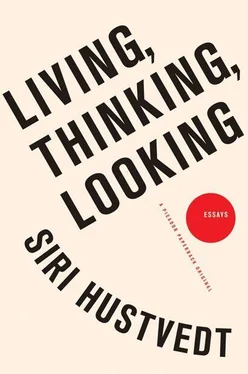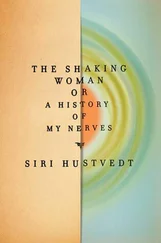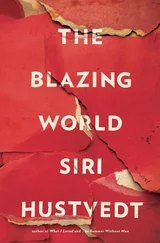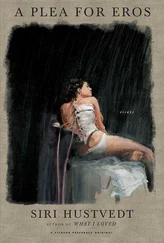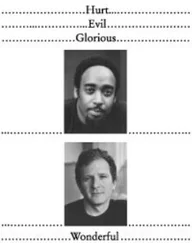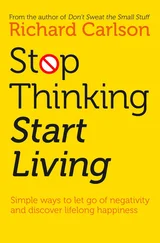3. Hans Kohut, “Forms and Transformations of Narcissism,” Journal of the American Psychoanalytic Association 14 (1966): 246.
4. D. W. Winnicott, Deprivation and Delinquency (London and New York: Routledge, 1984).
5. John Bowlby, Attachment and Loss (New York: Basic Books, 1969).
6. Thomas Kuhn, The Structure of Scientific Revolutions (Chicago: University of Chicago Press, 1970).
7. Jürgen Habermas, The Philosophical Discourse of Modernity: Twelve Lectures , trans. F. G. Lawrence (Cambridge: MIT Press, 1990), 113.
8. Samuel Beckett, Waiting for Godot: A Tragicomedy in Two Acts (New York: Grove Press, 1954), 28.
9. Stafford Beer, preface to Autopoiesis and Cognition: The Realization of the Living , by H. R. Maturana and F. J. Varela (Dordrecht, Netherlands: D. Riedel Publishing, 1980), 64.
10. Mignon Nixon, Fantastic Reality: Louise Bourgeois and a Story of Modern Art (Cambridge: MIT Press, 2005).
11. Daniel Dennett, Consciousness Explained (Boston: Little, Brown, 1991).
12. Antonio Damasio, Descartes’ Error: Emotion, Reason and the Human Brain (New York: HarperCollins, 1994).
13. V. S. Ramachandran, A Brief Tour of Human Consciousness: From Imposter Poodles to Purple Numbers (New York: Pi Press, 2004).
14. David Freedberg, The Power of Images: Studies in the History and Theory of Response (Chicago: University of Chicago Press, 1989).
15. A. R. Luria, The Man with a Shattered World: The History of a Brain Wound , trans. L. Solotaroff (Cambridge, MA: Harvard University Press, 1972).
16. Maurice Merleau-Ponty, The Visible and the Invisible , trans. C. Lefort and A. Lingis (Evanston, IL: Northwestern University Press, 1969), 27.
17. American Psychiatric Association, Diagnostic and Statistical Manual of Mental Disorders , 4th ed. (Arlington, VA: American Psychiatric Association, 2000), xxxi.
18. Robert Musil, The Man Without Qualities , trans. Sophie Wilkins (New York: Alfred A. Knopf, 1995), 502.
19. Ibid., 503.
20. Ibid., 503.
On Reading
1. Danilo Kis, A Tomb for Boris Davidovich, trans. D. Mikic-Mitchell (New York: Penguin, 1980).
2. The Passions of the Soul, in Essential Works of Descartes (New York: Bantam, 1961).
3. Gottfried Leibniz, Monadology in Discourse on Metaphysics and the Monadology, trans. George R. Montgomery (Buffalo, NY: Prometheus, 1992).
4. There are many studies on change and inattentional blindness. See R. Rensink, “When Good Observers Go Bad: Change Blindness, Inattentional Blindness, and Visual Experience,” Psyche 6 (2000): 9; A. Ariga, H. Yokasawa, and H. Ogawa, “Object-Based Attentional Selection and Awareness of Objects,” Visual Cognition 15 (2007): 685–709. For the broader philosophical implications, see Eric Switzgebel, “Do You Have Constant Tactile Experience of Your Feet in Your Shoes? Or Is Experience Limited to What’s in Attention?” Journal of Consciousness Studies 14 (2007): 5–35.
Stig Dagerman
1. Stig Dagerman, The Snake , trans. Laurie Thompson (London: Quartet Books, 1995).
2. The Standard Edition of the Complete Works of Sigmund Freud , ed. and trans. James Strachey, vol. 20 (1926), Inhibitions, Symptoms, and Anxiety (London: Hogarth Press, 1959), 132.
3. Søren Kierkegaard, The Concept of Anxiety , trans. Edna Hong and Howard Hong (Princeton, NJ: Princeton University Press, 1981), 61.
4. Jean-Paul Sartre, Being and Nothingness: An Essay on Phenomenological Ontology , trans. H. E. Barnes (New York: Washington Square Press, 1966).
The Analyst in Fiction: Reflections on a More or Less Hidden Being
1. Sigmund Freud, On Aphasia: A Critical Study (1891), trans. E. Stengel (New York: International Universities Press, 1953), 55.
2. Italo Svevo, Zeno’s Conscience , trans. William Weaver (New York: Everyman’s Library, 2001), 3.
3. Vladimir Nabokov, Lolita (New York: Charles Putnam and Sons, 1955), 7.
4. Philip Roth, Portnoy’s Complaint (New York: Vintage, 1994), 274.
5. George Makari, Revolution in Mind: The Creation of Psychoanalysis (New York: HarperCollins, 2008), 334.
6. Otto Kernberg, Borderline Conditions and Pathological Narcissism (Lanham, MD: Aronson, 1985).
7. Lisa Appignanesi, “All in the Mind,” The Guardian, February 16, 2008, http://www.guardian.co.uk/books/2008/feb/16/featuresreviews.guardianreview2.
8. F. Scott Fitzgerald, Tender Is the Night (New York: Charles Scribner’s Sons, 1961), 208–9.
9. Ibid., 208.
10. Simone de Beauvoir, The Mandarins , trans. L. M. Friedman (New York: Norton, 1991), 184–85.
11. D. W. Winnicott, “Counter-Transference,” in The Maturational Processes and the Facilitating Environment (London: Karnac Books, 1990), 160–61.
Critical Notes on the Verbal Climate
1. Immanuel Kant, What Is Enlightenment? trans. H. B. Nisbet (New York: Penguin, 2009), 1.
2. New York Daily Plebeian , April 20, 1844, http://www.historyteacher.net/USProjects/DBQs2002/DBQ2002_Immigration.htm.
3. Thomas Frank, What’s the Matter with Kansas? How Conservatives Won the Heart of America (New York: Henry Holt, 2004).
Three Emotional Stories
1. Siri Hustvedt, “Yonder,” in A Plea for Eros (New York: Picador, 2006), 41.
2. Augustine, Confessions, trans. H. Chadwick (Oxford: Oxford University Press, 1988), 10:220–21.
3. Sandra Rudnick Luft, Vico’s Uncanny Humanism: Reading the New Science Between Modern and Post Modern (Ithaca: Cornell University Press, 2003), 143.
4. Endel Tulving, “How Many Memory Systems Are There?” American Psychologist 40, no. 4 (1984): 385–98; Tulving, “What Is Episodic Memory?” Current Directions in Psychological Science 2, no. 3 (1993): 67–70; Henry L. Roediger and Fergus I. M. Craik, eds., Varieties of Memory and Consciousness: Essays in Honour of Endel Tulving (Hillsdale, NJ: Lawrence Erlbaum, 1989).
5. Jacek Debiec and Joseph E. LeDoux, “The Amygdala and the Neural Pathways of Fear,” in Post-Traumatic Stress Disorder: Basic Science and Clinical Practice , ed. Priyattam Shiromani, Terence Keane, and Joseph LeDoux (New York: Humana, 2009), 23–39; LeDoux, Synaptic Self: How Our Brains Become Who We Are (New York: Viking, 2002); Karim Nader, Glenn E. Schafe, and Joseph LeDoux, “Fear Memories Require Protein Synthesis in the Amygdala for Reconsolidation after Retrieval,” Nature 406, no. 6797 (2000): 722–26.
6. “Brute and Human Intellect,” in William James: Writings 1878–1889 (New York: Library of America, 1992), 911.
7. Jerome Bruner, Actual Minds, Possible Worlds (Cambridge, MA: Harvard University Press, 1986), 3–10.
8. Thomas Kuhn, The Structure of Scientific Revolutions (Chicago: University of Chicago Press, 1962).
9. Emile Benveniste, Problems in General Linguistics, trans. M. E. Meek (Coral Gables: University of Miami Press, 1971), 217–22.
10. A. R. Luria, Higher Cortical Functions in Man, trans. B. Haigh (New York: Basic Books, 1966), 31–35.
11. Maurice Merleau-Ponty, The Phenomenology of Perception, trans. C. Smith (London: Routledge and Kegan Paul, 1962), 43.
12. Ibid., 43.
13. Paul Ricoeur, Time and Narrative , trans. K. McLaughlin and D. Pellauer (Chicago: University of Chicago Press, 1984), 1:68.
Читать дальше
